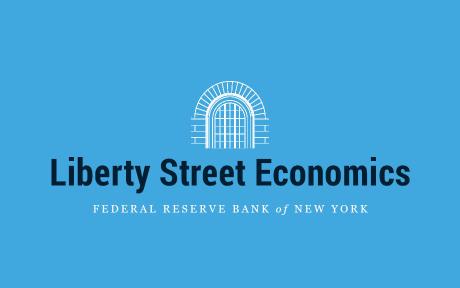
The incentives that drive bank runs have been well understood since the seminal work of Nobel laureates Douglas Diamond and Philip Dybvig (1983). When a bank is suspected to be insolvent, early withdrawers can get the full value of their deposits. If and when the bank runs out of funds, however, the bank cannot pay remaining depositors. As a result, all depositors have an incentive to run. The failures of Silicon Valley Bank and Signature Bank remind us that these incentives are still present for uninsured depositors, that is, those whose bank deposits are larger than deposit insurance limits. In this post, we discuss a policy proposal to reduce uninsured depositors’ incentives to run.
What is the Minimum Balance at Risk?
Several of us developed the minimum balance at risk (MBR) in 2012 as a response to the systemic risk represented by money market funds (MMFs). The incentives of MMF investors to redeem when a fund is in trouble are very similar to those of uninsured depositors, especially when MMFs operate with a constant net asset value (that is, the value of their shares is rounded to a fixed amount, like a dollar). Early redeemers from MMFs, like early withdrawers from banks, get the benefit of preserving both the liquidity and the principal of their investments. The goal of the MBR is to create a tradeoff between the liquidity of these investments and their risk: investors who withdraw to preserve liquidity do so at the cost of greater risk to their principal; this tradeoff mitigates the incentives to run.
How Does the MBR Work?
The basic mechanics of the MBR applied to MMFs are described in this Liberty Street Economics post. A similar mechanism could be applied to uninsured depositors: a small fraction of each depositor’s uninsured deposit, which we call the minimum balance at risk, would be available for withdrawal only with a delay. For instance, the MBR could be 5 percent of a depositor’s maximum uninsured deposit balance over the previous thirty days (the size of the MBR parameters in this post is purely illustrative). If a depositor has been holding $1 million of uninsured deposits for the past thirty days, she would be able to withdraw all but $50,000 (5 percent) of her uninsured deposits immediately. The remaining $50,000 would only be available to her with a delay—say, forty-five days.
Note that this depositor could, without restriction, withdraw $100,000 every day for nine days in a row. Only if her requested withdrawals exceed 95 percent of her maximum uninsured balance would her access to any funds be delayed. So, if she requested another $100,000 withdrawal on the tenth day, she would only receive $50,000. The remaining $50,000 would be available at the end of the forty-five-day delay period.
To reduce the incentives to run, a portion of a withdrawing depositor’s MBR would be subordinated to the deposits of those who did not withdraw. Subordination would only be relevant in the unlikely event of a bank failure. If the bank fails and uninsured depositors suffer losses, subordination assures that withdrawing depositors absorb some of the loss before depositors who did not withdraw. Thus, if the MBR is large enough compared to depositors’ expected losses, subordination creates a disincentive to run and creates a trade-off between preserving liquidity, by withdrawing, and preserving principal by leaving uninsured deposits in the bank. In contrast, under current rules, fast-running uninsured depositors preserve both liquidity and principal at the expense of other uninsured depositors.
Consider our earlier example, but now assume that the bank has only two depositors, each with $1 million in uninsured deposits. Suppose depositor A requests to withdraw all her uninsured deposits, while depositor B leaves all her uninsured deposits in the bank. In this case, depositor A would receive $950,000 immediately but $50,000 would stay in the bank for forty-five days. Since depositor B did not withdraw any funds, depositor A’s $50,000 MBR would be subordinated to B’s uninsured deposits. Hence, if the bank were to fail, depositor A would absorb any loss up to $50,000 before depositor B lost a penny.
One important consideration is how junior the MBRs of withdrawing depositors should be compared to other liabilities. Their MBRs should be junior at least to other uninsured deposits, but they could be even more junior. For example, these MBRs might be treated on par with senior-unsecured debt. The more junior the MBR, the greater the disincentive to run.
Finally, the MBR could be made mandatory or voluntary. In the latter case, favorable regulatory treatment could create an incentive for banks to introduce MBRs. For instance, liquidity rules could give uninsured deposits that are subject to the MBR a lower runoff rate in the Liquidity Coverage Ratio (LCR). However it is designed, adoption of an MBR would likely require a number of changes to applicable laws and regulations.
The MBR is Ex Ante and Always On
One important element of the MBR is that it is in place ex ante and “always on,” so it doesn’t need to be introduced during periods of stress when public actions to mitigate withdrawal pressures could be seen as an adverse signal that causes panic. Most of the time, the MBR’s only effect is to make uninsured deposits somewhat less liquid.
The MBR would help protect both banks and uninsured depositors from the deleterious effects of bank runs. This protection would reduce the first-mover advantage that Diamond and Dybvig analyzed. Moreover, the protection would come from depositors themselves, not from other banks or taxpayers.
Another Tool in the Kit
The incentives provided by the MBR are in many ways superior to those arising from insuring all deposits, which could promote excessive risk taking. Would the MBR have prevented the runs at Silicon Valley Bank and Signature Bank? The MBR does not address risk management issues that contributed to the problems at those banks. Such issues are the responsibilities of the bank’s owners, management, and supervisors. But it would reduce the incentives of depositors to run, thereby making banks safer.
To Sum Up
The MBR was introduced a decade ago as a means of mitigating run risks in MMFs. The Financial Stability Oversight Council (FSOC) included the MBR as part of one alternative in its 2012 “Proposed Recommendations for Money Market Mutual Fund Reform,” and eight years later, following the run on MMFs in March 2020, the President’s Working Group on Financial Markets again identified the MBR as an option for MMF reform. Here, we’ve shown that the MBR could be used to mitigate risks in another run-prone segment of the financial markets, uninsured deposits at banks.

Marco Cipriani is head of Money and Payments Studies in the Federal Reserve Bank of New York’s Research and Statistics Group.

Michael Holscher is a director in the Federal Reserve Bank of New York’s Supervision Group.

Patrick McCabe is a deputy associate director in the Federal Reserve Board’s Division of Research and Statistics.

Antoine Martin is the financial research advisor for Financial Stability Policy Research in the Federal Reserve Bank of New York’s Research and Statistics Group.

Richard Berner is a clinical professor of management practice at the NYU Stern School of Business.
How to cite this post:
Marco Cipriani, Michael Holscher, Patrick McCabe, Antoine Martin, and Richard Berner, “Mitigating the Risk of Runs on Uninsured Deposits: the Minimum Balance at Risk,” Federal Reserve Bank of New York Liberty Street Economics, April 14, 2023, https://libertystreeteconomics.newyorkfed.org/2023/04/mitigating-the-risk-of-runs-on-uninsured-deposits-the-minimum-balance-at-risk/.
Disclaimer
The views expressed in this post are those of the author(s) and do not necessarily reflect the position of the Federal Reserve Bank of New York or the Federal Reserve System. Any errors or omissions are the responsibility of the author(s).












 RSS Feed
RSS Feed Follow Liberty Street Economics
Follow Liberty Street Economics